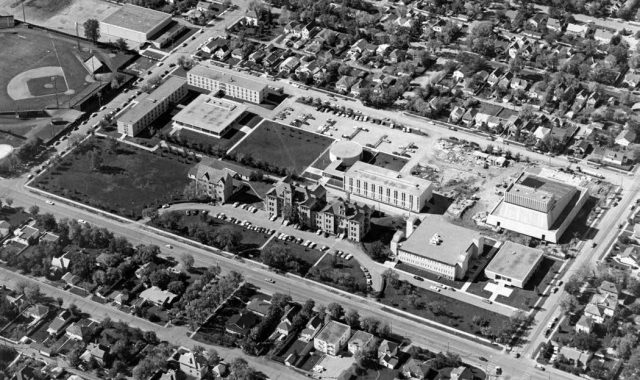Campus Evolution

Brandon University traces its roots back to the late 19th century and the growth of higher education institutions in the City of Brandon. It began as a liberal arts college that offered some theological training and high school education, in addition to a school of music (since 1906). Brandon College was affiliated with McMaster University and the Baptist Union of Western Canada until 1938, when the Baptist Union decided it could no longer support the college due to financial reasons. In that year, Brandon College became a non-denominational corporation and joined with the University of Manitoba as an affiliated college.
BU received its charter on June 5, 1967, when Princess Alexandra and the Honourable Angus Ogilvie visited Brandon. Programming in baccalaureate programs expanded and evolved rapidly after 1967 and has continued to present day.
BU has since been recognized for its liberal arts and sciences programs, and has maintained a steady-growing student population from rural Manitoba and beyond. Its physical campus has grown building by building (the most recent which include the Clark Hall and the Original Building renovation in 1997, Health Studies building in 2003, Healthy Living Centre in 2013) to fill its campus west of downtown Brandon, and now requires a Campus Master Plan to best accommodate future growth and renew the existing campus condition.
Campus Buildings
Campus buildings display a variety of styles and materials, and as the University has grown, the scale and style of buildings has changed to reflect the times. The earliest structures prior to the University receiving its charter display a romanesque revival style such as historic Clark Hall, while buildings dating to the 1960’s-1970’s reflect modernist design elements and Brutalist styles, such as the Western Manitoba Centennial Auditorium. More recent structures have taken on more contemporary forms, with newer buildings emphasizing less concrete and stone, and incorporating more glazing and varying cladding materials.
